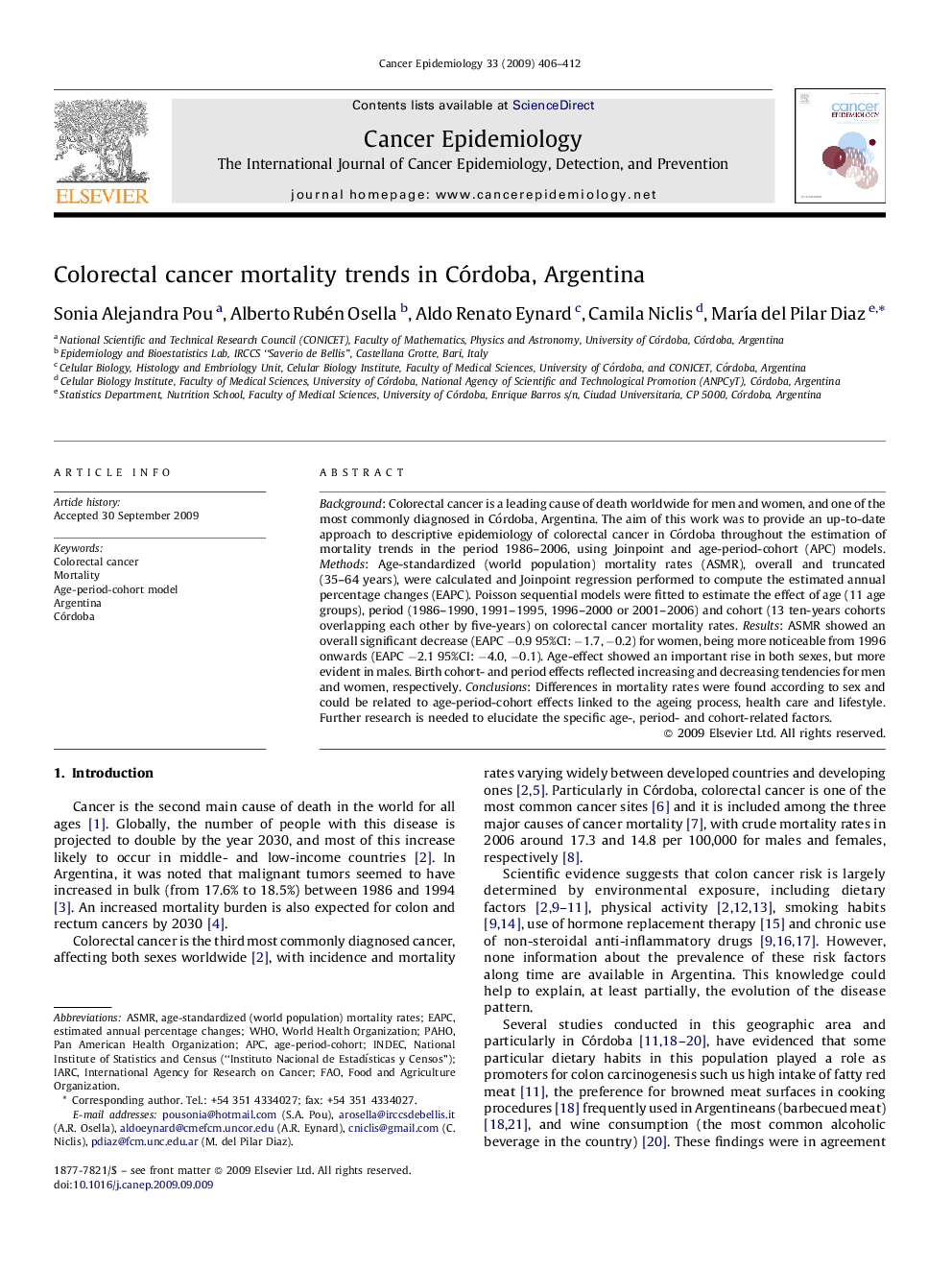| Article ID | Journal | Published Year | Pages | File Type |
|---|---|---|---|---|
| 2109424 | Cancer Epidemiology | 2009 | 7 Pages |
Background: Colorectal cancer is a leading cause of death worldwide for men and women, and one of the most commonly diagnosed in Córdoba, Argentina. The aim of this work was to provide an up-to-date approach to descriptive epidemiology of colorectal cancer in Córdoba throughout the estimation of mortality trends in the period 1986–2006, using Joinpoint and age-period-cohort (APC) models. Methods: Age-standardized (world population) mortality rates (ASMR), overall and truncated (35–64 years), were calculated and Joinpoint regression performed to compute the estimated annual percentage changes (EAPC). Poisson sequential models were fitted to estimate the effect of age (11 age groups), period (1986–1990, 1991–1995, 1996–2000 or 2001–2006) and cohort (13 ten-years cohorts overlapping each other by five-years) on colorectal cancer mortality rates. Results: ASMR showed an overall significant decrease (EAPC −0.9 95%CI: −1.7, −0.2) for women, being more noticeable from 1996 onwards (EAPC −2.1 95%CI: −4.0, −0.1). Age-effect showed an important rise in both sexes, but more evident in males. Birth cohort- and period effects reflected increasing and decreasing tendencies for men and women, respectively. Conclusions: Differences in mortality rates were found according to sex and could be related to age-period-cohort effects linked to the ageing process, health care and lifestyle. Further research is needed to elucidate the specific age-, period- and cohort-related factors.
